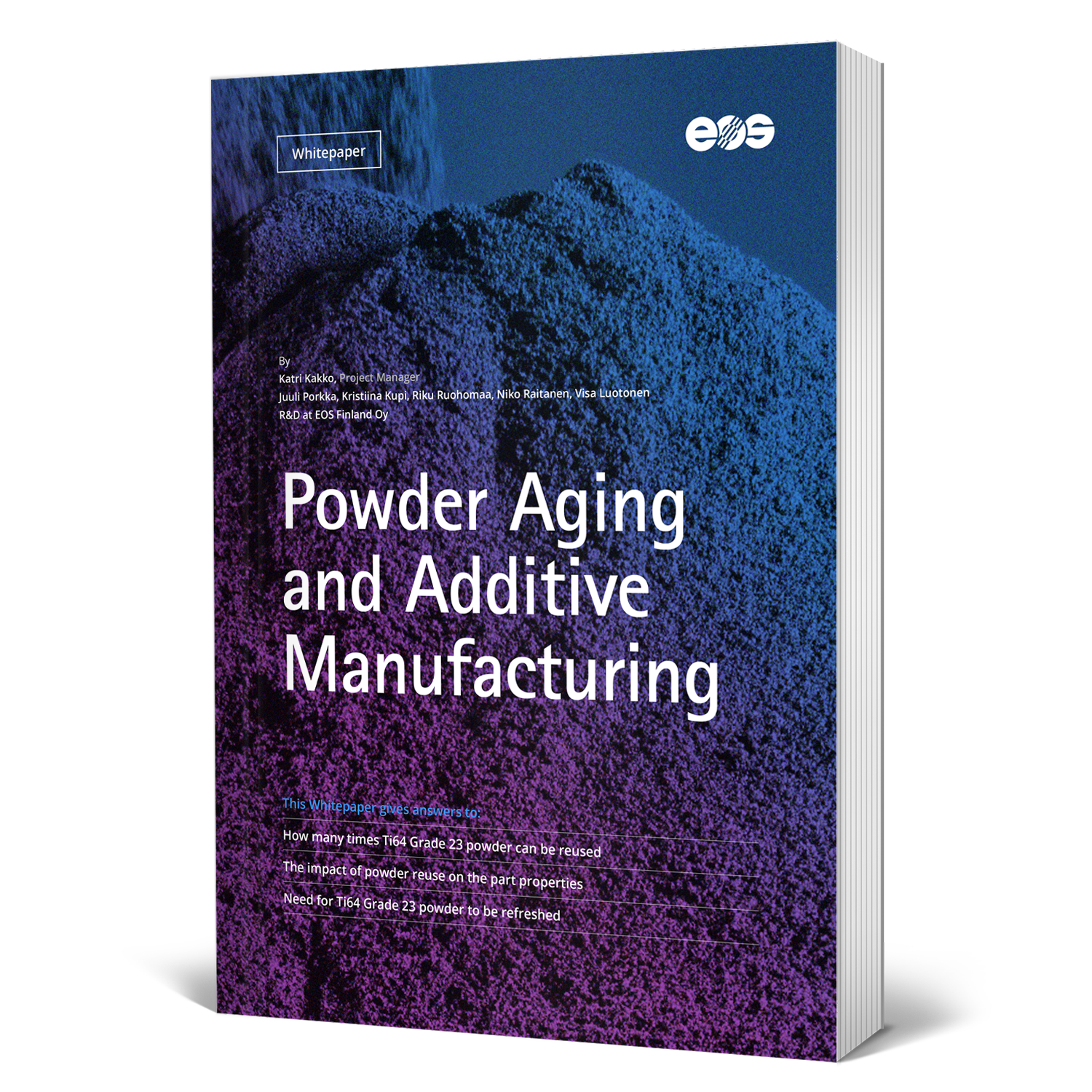Powder Aging and Additive Manufacturing
Free Whitepaper
In additive manufacturing, powder aging is
defined as the change of powder properties and pick-up of certain elements across multiple process cycles. As the powder properties directly affect the process and resulting part properties, aging can limit the number of cycles powder can be used.
Download the whitepaper "Powder Aging and Additive Manufacturing" and get deep insight about powder aging effects on process and properties of Ti-6Al-4V ELI.
In the additive manufacturing (AM) of titanium alloys through laser powder bed fusion (LPBF), rapid oxidation takes place in the metal melt pool and the spatters created by the process.
Additionally, the laser-powder interaction in repeated process cycles can change the powder properties, such as particle size and powder density. As these effects accumulate, a phenomenon known as powder aging, they influence the final part properties, setting an upper limit for the powder reuse cycles. The aim of the present study was to investigate the criticality of powder aging in the LPBF process with EOS Titanium Ti64 Grade 23 powder
using statistical analysis and an evaluation of analysis method
accuracies.
This whitepaper gives information about:
- How many times Ti64 Grade 23 powder can be reused
- The impact of powder reuse on the part properties
- Need for Ti64 Grade 23 powder to be refreshed
